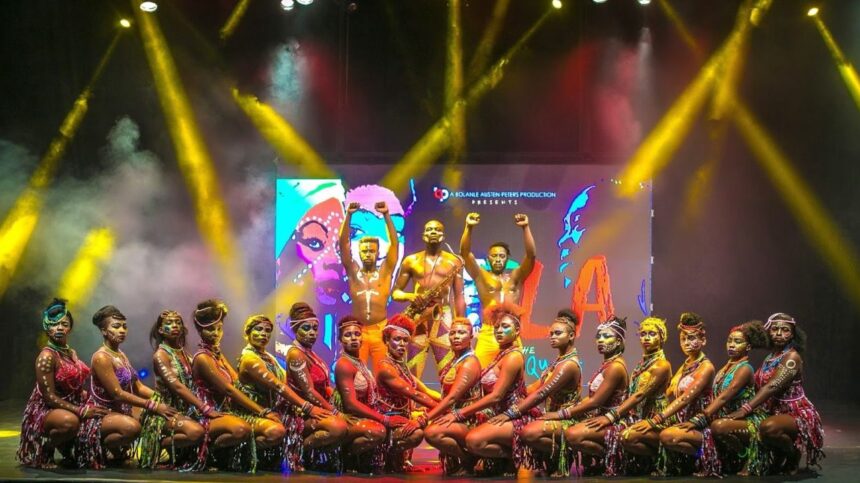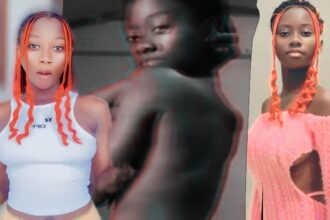Multi-instrumentalist, composer and pioneer of the Afrobeat music genre, late Fela Anikulapo-Kuti, may have died 21 years ago, but like the northern star, he continues to shine even more and live more influentially in the minds of Nigerians, Africans and even the world.
The Marriage
In 1978, Fela married 27 women in one day. This should not be strange to those who know the life and style of the Nigerian music legend nicknamed Abami Eda.
Many of Fela’s band members became homeless after the devastating soldier attack on Fela’s commune (Kalakuta Republic) in 1977. To keep them together, Fela decided to do the unusual.
He gave a piece of paper to his female band members requesting the names of those that would like to marry him; the entire twenty-seven female band members put down their names.
After getting their consent, Fela Kuti married the 27 women on February 20, 1978, at the Parisona Hotel in Anthony, Lagos, with the blessings of twelve Ifa priests.
It was alleged that some of the ladies’ parents objected to the marriage.
Fela married the women to protect and keep them together. The marriage ceremony was attended by Fela’s family, friends and other band members.
During the marriage ceremony, Fela rendered a short speech, pressed naira notes on his new wives’ foreheads and gave them marriage certificates. Fela embraced a rotation system of 12 wives at a time. After the marriage, Fela took his 27 wives to Ghana for a honeymoon.
However, in 1986, shortly after his release from prison, Fela Kuti divorced his 27 wives on the claim that marriage brings jealousy. It should be noted that they were not forced to leave his house after the divorce; some lived with him till his death in 1997.
Fela and his women
One aspect of his life that many still find quite intriguing, is his women—the Kalakuta Republic Queens. Even his oldest son, Femi Kuti, still confesses he cannot explain why his father needed to marry 27 women in one day like he suddenly did in 1978.
Although his mother, Chief Funmilayo Ransome-Kuti, was a die-hard feminist activist in the anti-colonial movement and his father, Reverend Israel Oludotun Ransome-Kuti, was an Anglican minister and school principal as well the first president of the Nigeria Union of Teachers, Fela was however not known to be a feminist who believes in gender equity.
However, the respect and love between himself and the Queens of his famous Kalakuta Republic were they all communally lived and performed, were so perfectly mutual that he was willing to marry them all to save them from society’s perception of them and earn them some respect.
This was years after his first and only legally-married wife whom he met and married while living in London, Remi Taylor-Kuti (died 2002); mother of Yeni, Femi and late Sola, had left him.
The forgotten Queens of Kalakuta Republic
Married in a single ceremony on 20th February, 1978, a year after Kalakuta Republic was set ablaze and his mother thrown down a window, these Queens were backup singers and dancers who had left their homes and families as underage girls, on their own accord, to live with the musical legend.
Despite the public’s perception of them as harlots, marijuana smokers and even ostracisation by most of them by their families, they can in fact be regarded as the very soul of Fela’s music.
They were his backbone physically (as he was said to always have at least 12 of them beside while seated), emotionally (as they stood solidly behind him through thick and thin, including in all his arrests and even beatings by soldiers) and also mentally (as they soothed and gave him stability).
After Fela, they were the main attraction. The women took Kalakuta ten steps higher; in fact, the Afrobeat scene did not become the artistic trend it is today until their emergence.
They were the provocateurs of their time, stormed Kalakuta as teenagers and even freely smoldered marijuana without minding who was watching.
For their facial makeup, these women used efun (white organic paint) and osun (red paint culled from tree sap). With these, they creatively made artistic patterns and dots on their faces.
They set the trend and standard for adornment in music culture and danced sensually in African traditional attires and beads, making Fela’s music more alluring with their hips.
They were the face and spirit of Afrobeat, and thus became major targets to those who wanted to silence Fela.
Hardly talked about
Though not so much is today heard of most of these women who stood with Fela throughout his life and who have also decried not being part of the annual Felabration held in memory of the legend, Bolanle Austen-Peters of Terra Kulture, had in December 2017, resurrected them in a stage play titled Fela and the Kalakuta Queens, which she produced; drawing out some of these women to limelight again after decades.
One of those drawn out recently was Laide Anikulapo-Kuti, nee Babayale. Relieving her experiences as a Queen at the Kalatuta Republic and wife to Fela, Laide,who emphasised that Fela did not die of HIV/AIDs as reported after his death, said: “I met Fela while I was in secondary school. My house was opposite the Shrine at Surulere Night Club.
“That was how I met him and became his dancer. I started with him as a girlfriend before he eventually married me in 1978. I am a music lover and naturally fell in love with Fela. It was the music that attracted me to him.”













